This fourth-generation Santa Fe is quite something. I thought the car it replaced was a bold design but this one landed in a blaze of oohs and aahs.
It's the sign of a very confident company to drop a car like this - BMW did something similar when Chris Bangle was in charge of its design and somehow got away with it. Hyundai has definitely gotten away with the styling on this car because it seems like Australia's enthusiasm for it is undimmed.
Delivering a car with bold styling might demonstrate confidence, but the car also has to be good for people to want to keep buying it. The Santa Fe Active I drove in June impressed me with its size and excellent value for money proposition.
Here at the top of the range in the Highlander, Hyundai is pushing the boundaries of what people might want to pay for a Hyundai while also battling with housemate Kia (Sorento) and an almighty three-pronged attack from Toyota (Fortuner, Kluger, and Prado).

Hyundai Santa FE 2020: Highlander MPI BLK-BGE (2WD)
| Engine Type | V6, 3.5L |
|---|---|
| Fuel Type | Unleaded Petrol |
| Fuel Efficiency | 10.6L/100km (combined) |
| Seating | 7 |
| Price From | $34,320 - $40,810 |
| Safety Rating |
|
Does it represent good value for the price? What features does it come with?
8 / 10
The Highlander is a diesel-only proposition and perches at the top of the Santa Fe range at $60,500, before on-road costs.
That buys you an impressively long list of equipment, including 19-inch alloys, a 10-speaker stereo, dual-zone climate control, around-view cameras, reversing camera, front and rear parking sensors, active cruise control, electric front seats, sat nav, auto LED headlights, auto high beam, head-up display, partial leather trim, keyless entry and start, auto parking, power tailgate, auto wipers, a hefty safety package and a full-size spare.

The 8.0-inch media touchscreen hosts Hyundai's own (reasonable) software with DAB+ radio connectivity as well as Apple CarPlay and Android Auto along with a Qi wireless charging pad.
On top of that, Hyundai offers app-based remote control for the Highlander, calling it 'Auto Link Premium.'
You can remotely control the locks, sound the horn, start or stop the engine and set the climate control temperature. All of this is useful when it's particularly hot or cold.
It's also full of all sorts of telemetry such as fuel use, tyre pressures and you can book a service or summon roadside assist. There's a deal with Caltex that means you'll save four cents per litre on fuel.
Is there anything interesting about its design?
8 / 10
As with the Active, I am a fan, but the Highlander's extra styling details bring the bling... in a good way.
The big wheels fill the arches more fully, the addition of satin finish metallic bits and bobs and the chrome around the windows is classy without going overboard.
The basic design is so good there's no need to draw attention to particular bits and pieces with too much look-at-me chrome. It speaks very well for itself.

Hyundai has resisted throwing a set of 20-inch rims at it for the posh-person-about-town look and that's not a bad thing.
The interior is a decent step up from the Active I drove, too. There are some really nice details, like the irregular pattern on the speaker covers in the front door, the geometric stitching on the seats and the general feel of the materials create a feel commensurate with the price tag.
The is-it-or-isn't-it leather trim is good enough that I just don't care. It seems pretty soft and strong along with it.

How practical is the space inside?
8 / 10
Like other cars in the class, the Santa Fe is heavy on interior accommodation. Its seven seats are generous all the way through, with one of the roomiest third rows I've seen.

The backrests on the third row aren't separated by heavy contouring, either, so are broad enough for adults. You get air vents all the way back there (as do second row dwellers) and a pair of cupholders to boot.
The middle row gets out of the way simply, without the need for an Olympic weightlifter to help, and the gap is easy to climb through.

When in place, the middle row is wide enough for three across and has plenty of leg, head and shoulder room. There is also dark glass on the rear windows and sunshades for the middle row.
With the third row folded, you start with 547 litres of cargo storage, expanding to 1625 litres with all seats folded. With all seats up, there's enough room for a packet of Tim Tams, which would be happier in the cooled glove box or the big centre console bin.
You can carry plenty of liquids across six cupholders and four bottle holders.
What are the key stats for the engine and transmission?
7 / 10
Under the bonnet is Hyundai's 2.2-litre, four-cylinder CRDi turbo-diesel engine, developing 147kW and a hefty 440Nm between 1750 and 2750rpm.
To help shift its two-tonne bulk, you've got all-wheel drive fed by Hyundai's own eight-speed automatic transmission.

Hardcore off-roader types may be disappointed by the lack of centre diff or diff-locking, but there we are.
You can tow up to 2000kg with a braked trailer or 750kg unbraked.
How much fuel does it consume?
7 / 10
Hyundai claims 7.5L/100km on the combined cycle, which would be very nice, especially for such a big unit. Happily, a week in my hands delivered a still-reasonable 9.2L/100km in mostly suburban bashing about with a few highway runs here and there.
With a 71 litre tank, that figure would deliver 750km between fills.

Warranty & Safety Rating
What safety equipment is fitted? What safety rating?
8 / 10
The Highlander arrives with six airbags, ABS, stability and traction controls, forward collision warning, forward AEB (with pedestrian and cyclist detection), active cruise, lane keep assist, blind spot monitoring, rear cross traffic alert and exit warning to stop anyone getting out of the car being clobbered by an approaching vehicle.
Hyundai claims and industry-first with rear occupant alert, the car telling you if you've left someone inside once you've locked the doors.
There are two ISOFIX points and three top-tether points, but the third row offers nothing in the way of seat anchoring, which does limit the small human carrying capability a bit.
The Santa Fe scored a maximum five-star ANCAP rating when it was assessed in July, 2018.

What does it cost to own? What warranty is offered?
8 / 10
Hyundai offers a five year/unlimited kilometre warranty with a year of roadside assist.
If you stick with servicing your Santa Fe with Hyundai, you get another year of roadside up to 10 years, which is pretty good.
At the time of writing, Hyundai was offering a seven-year warranty, which I fully expect to become standard soon. Just a hunch.

You're expected to bring your Santa Fe in for a service every 12 months or 15,000km and the company offers a lifetime servicing plan which means you can look up service costs up until the car is about fifteen years old.
Each service costs around $400 with a few jumping up to $500 or $600 as the car gets older. You can also choose to pre-pay your servicing which means you can roll it into your financing.
What's it like to drive?
7 / 10
One thing I forgot to mention in my Santa Fe Active review popped up again on the Highlander and it's one of the few problems I could find.
The brake pedal feels really soft. There's nothing wrong with the brakes themselves, but you find yourself pressing the pedal more than you might like and you can't really feel the pads biting. You want a bit more feedback from a big bruiser like the Santa Fe.
Apart from that, things are pretty much as they were in the cheaper car, which is to say, very impressive. The Santa Fe is biased towards ride comfort but doesn't forget handling.

The up-spec Continental tyres are a nice touch and add a bit more grip when you're pushing on. The lower-profile rubber and bigger wheels don't seem to have unsettled the ride at all.
Hyundai's 2.2-litre turbo-diesel is a grunty unit and is paired with the excellent, smooth eight speed. With so many gears, you'd expect a fair amount of shifting, but it quickly lets you settle into the right gear while moving and only steps in when required, which is something Toyota's calibrators could learn from.
It's a big all-round improvement on the previous car, though - the older car was a bit firm and crashed into potholes and could be a bit noisy on the move. This one is quiet unless you've really stuck the boot into it or it's labouring under a heavy load.
Verdict
The Highlander is not the one everyone goes for but it's certainly got the most safety gear and a list of gear as long as your arm. The Kluger dominates this segment without the style (or sophistication) and nothing like the dynamic capability. All it has over the Santa Fe is a smooth petrol V6 that also drinks fuel like a 747. And the Santa Fe is a lot cheaper.
It's not the pick of the range for value-for-money, but it delivers on its price tag, with plenty of stuff, impressive ride and handling and a tidy powertrain.
Pricing Guides



.jpg)

.jpg)




















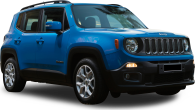














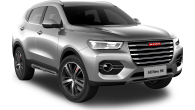

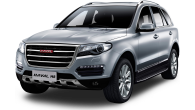



 copy.png)

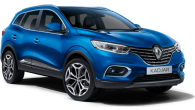
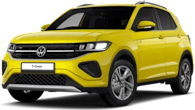











.jpg)




